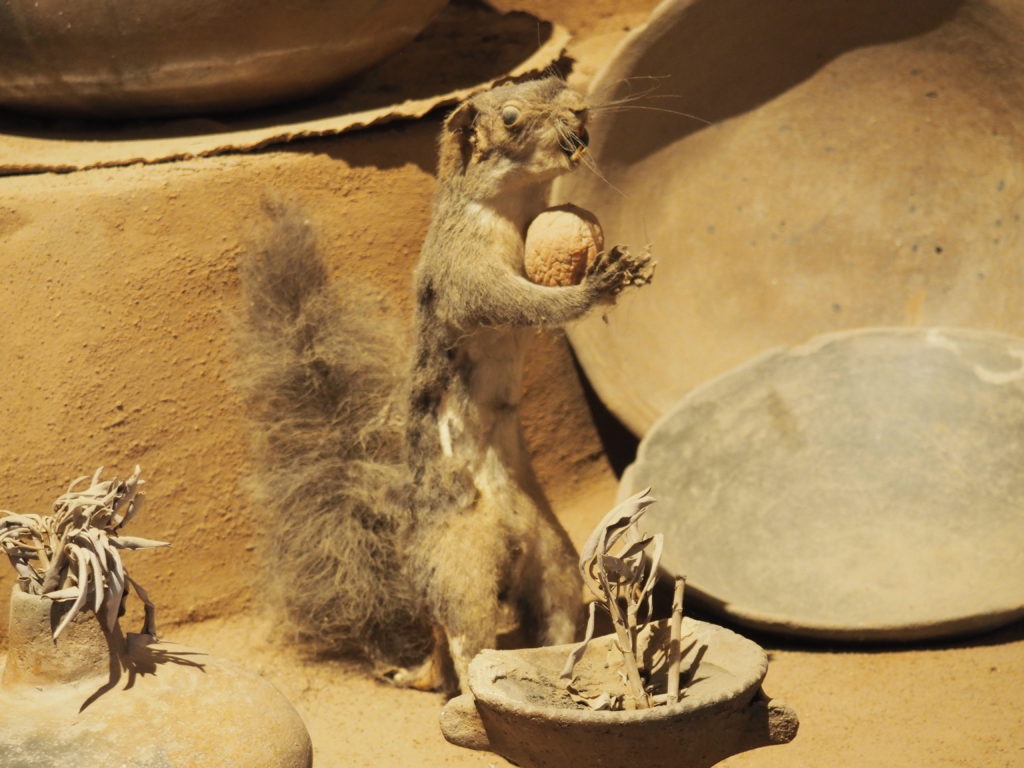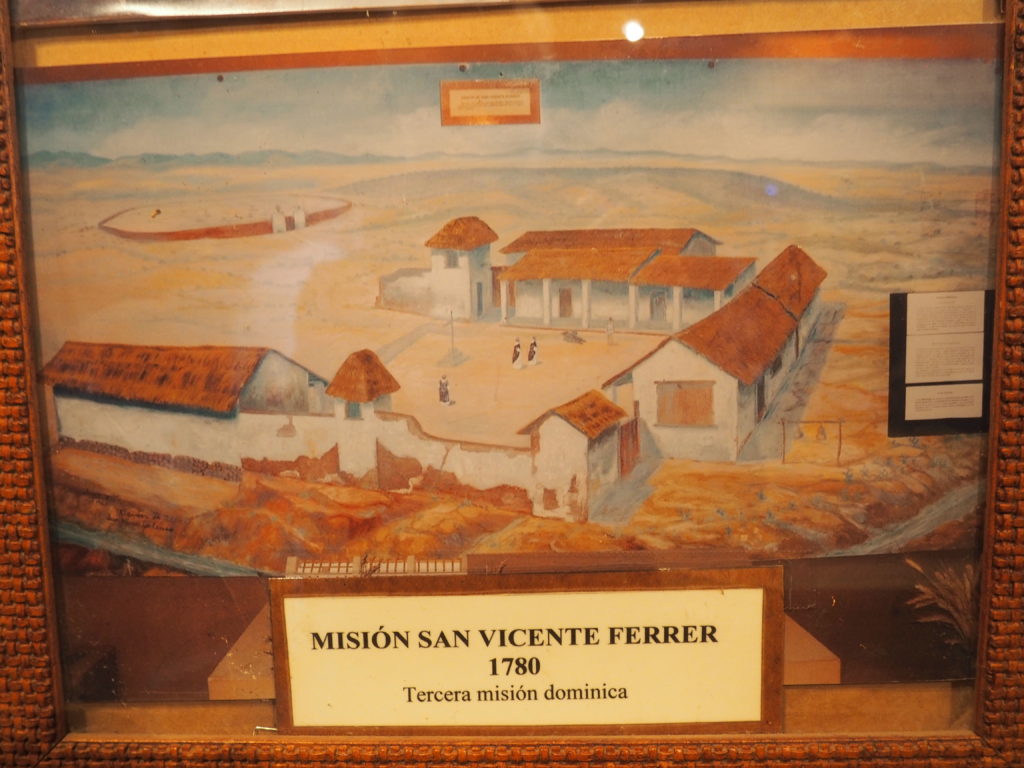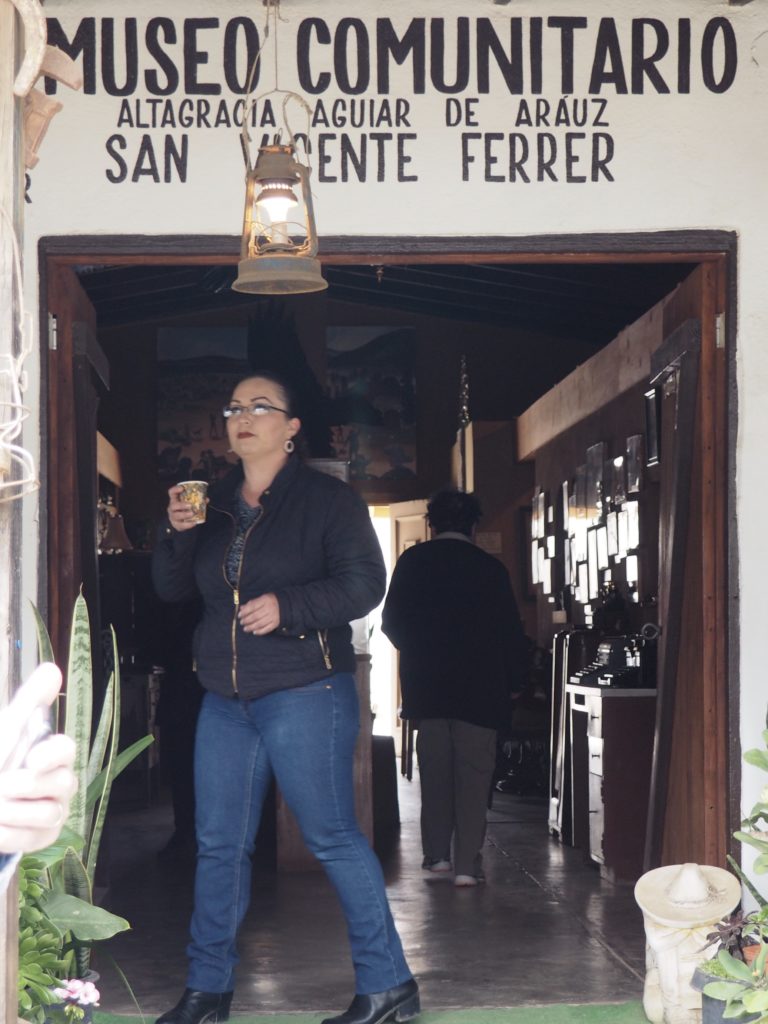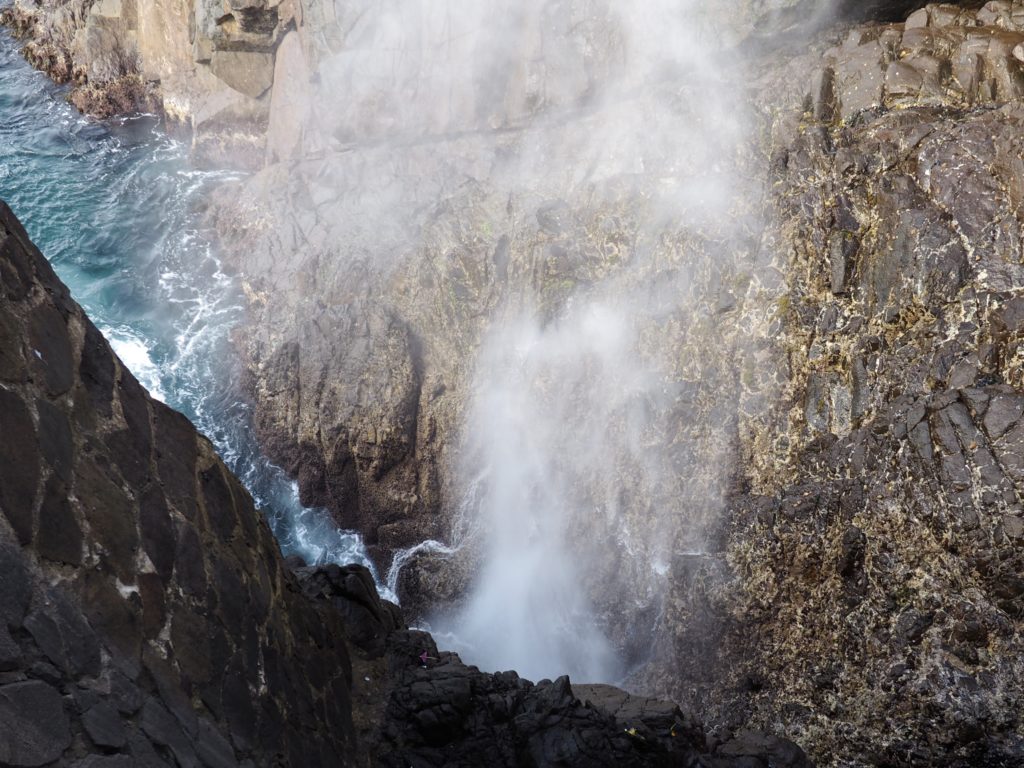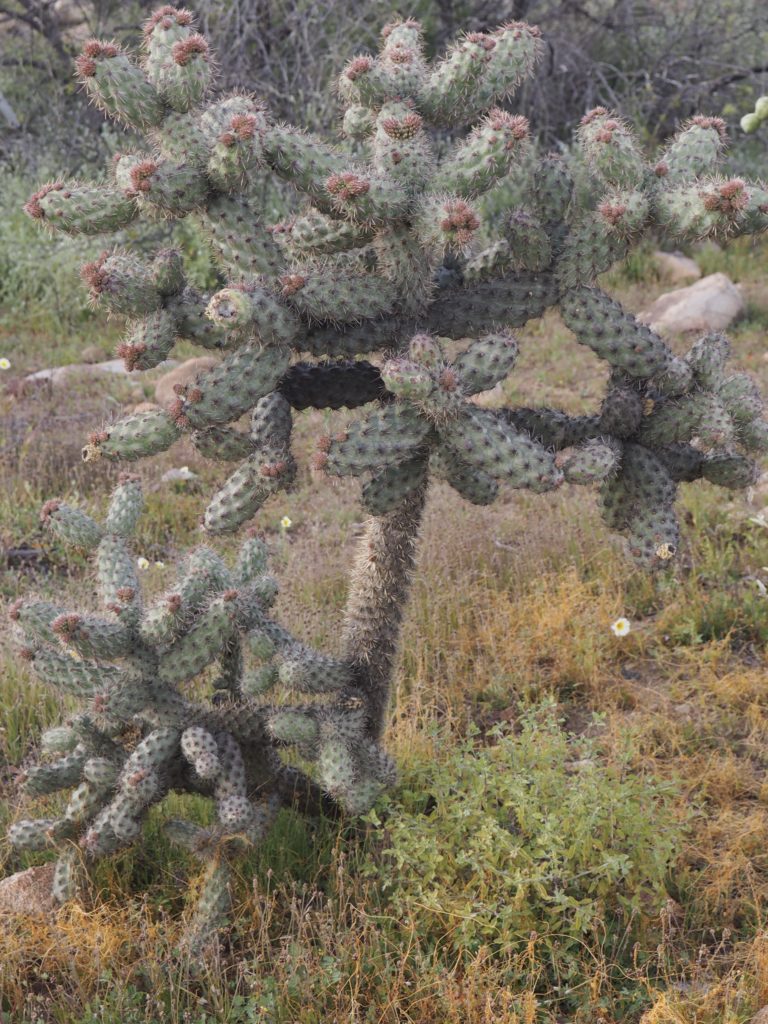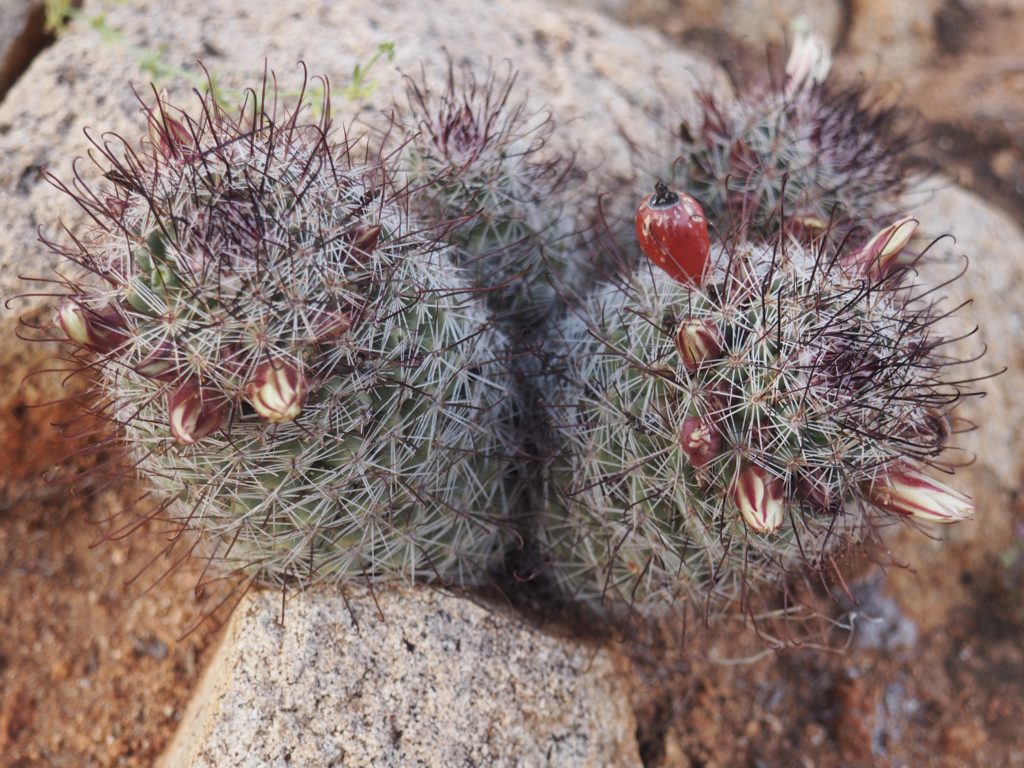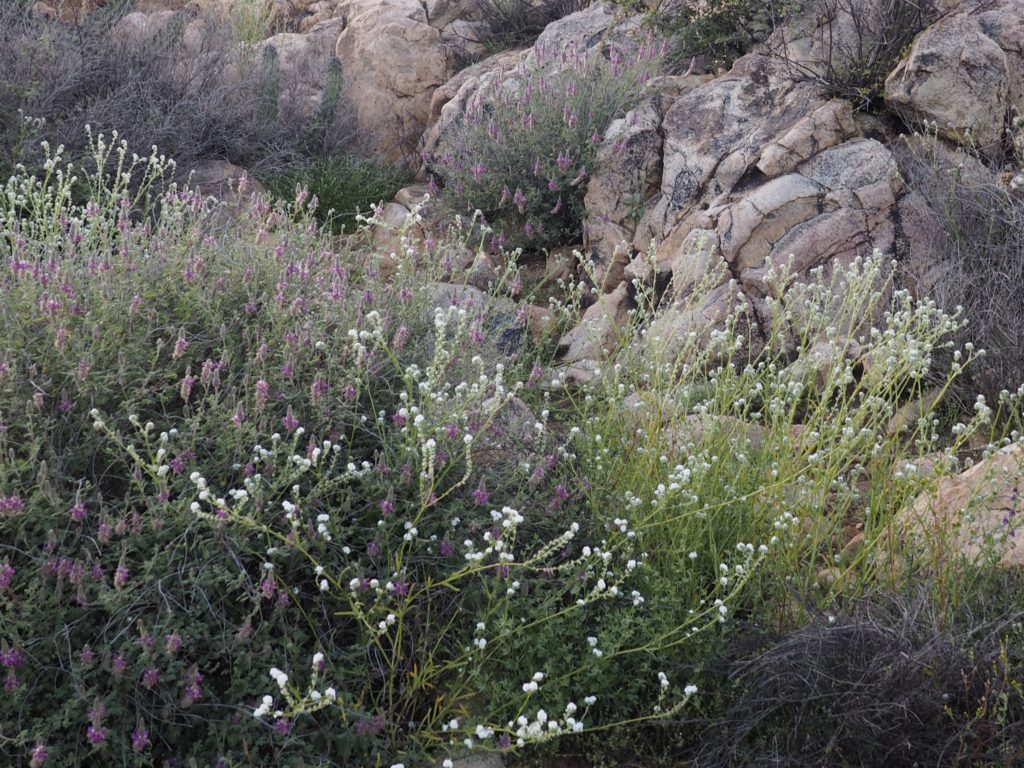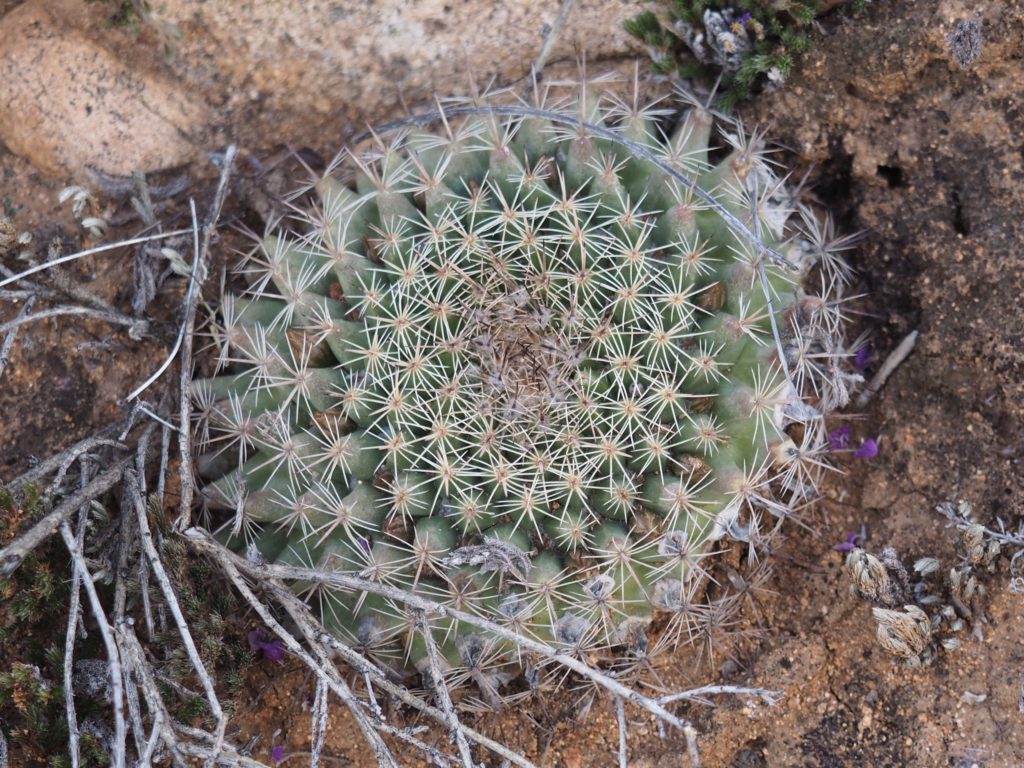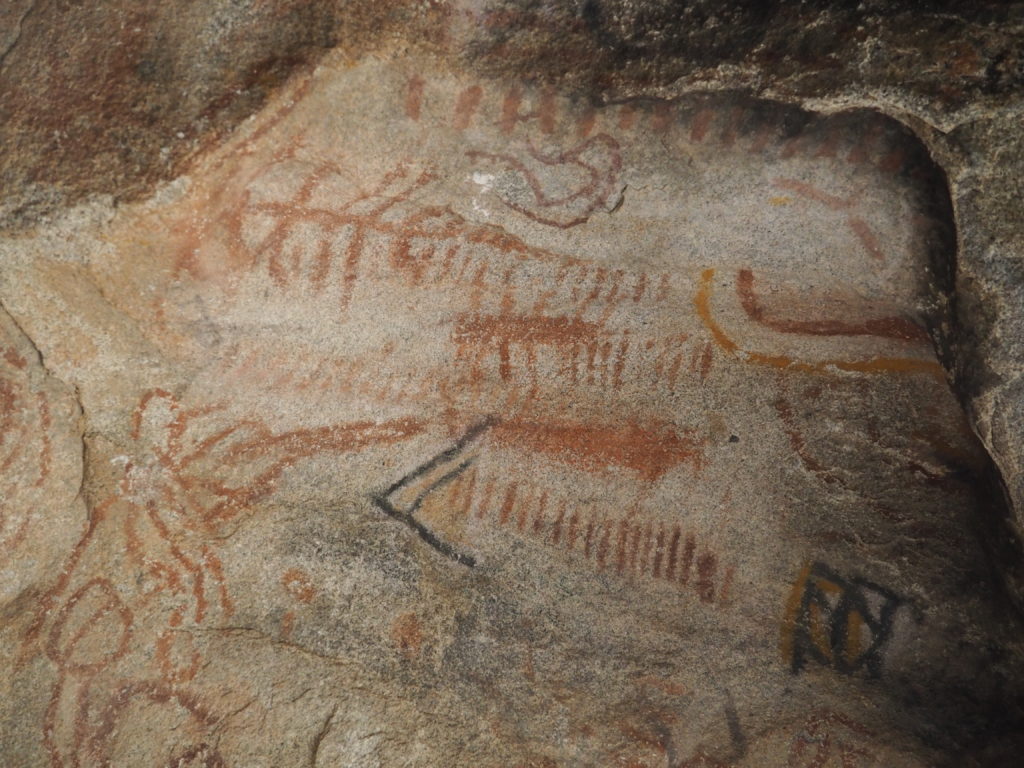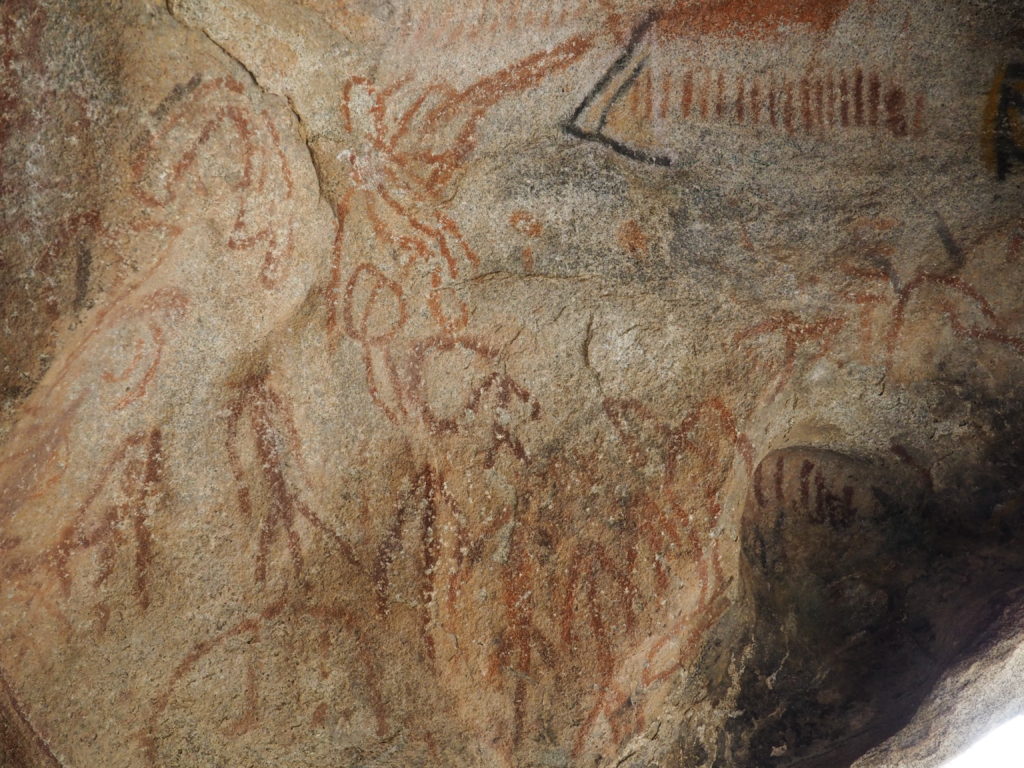
We hadn’t appreciated just how much food is grown in Baja California. We passed vast fields of produce wedged among the ever present mountains. Speculation about why this field (above) was allowed to go to seed ranged from it being a field meant to produce seed to wondering if a contract for the crop had somehow fallen through. The truly surprising thing, however, was that the white in the background of the photo isn’t a body of water. It’s crops being grown under cover. Again, mile after mile we passed extensive fields of white, of white tents overstuffed with growing plants.
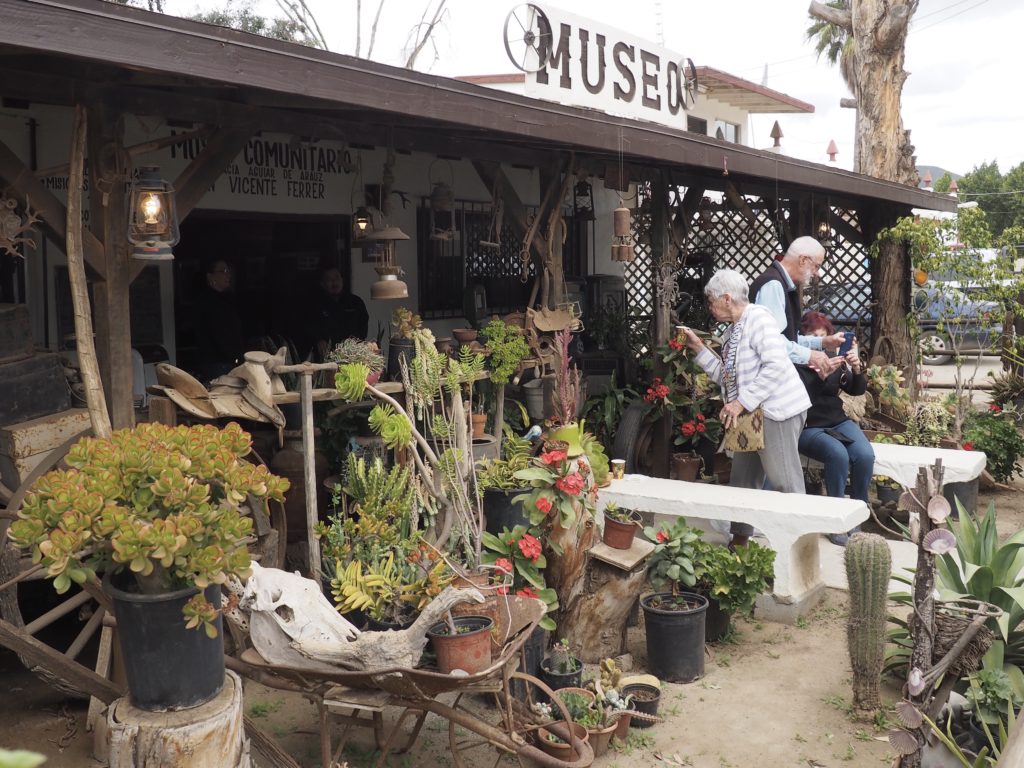
The farming community of San Vicente has a little museum. Many community members contributed the artifacts that said something about the lives of their families. The history of the iron pieced together from what was left from everyone’s grandmothers and great grandmothers reminded Jim of the row of irons left behind by his grandmother in her summer kitchen, including the ones that fit into the surface of the wood burning stove.
La Bufadora
Being a surfer, Hiroki was very helpful in letting us know when the next series of big waves would rush the shore and push water deep into the rocks and up and out in a big water spout. It’s one of the largest marine geysers in North America. Vendors line the road to the sea spout like the way to a religious shrine, selling all sorts of food and souvenirs.
The Sonoran (?) Desert

It seems odd to call it the Sonoran Desert when half of the desert lies in the states of the Baja Peninsula, but it has no other name except “the desert.”
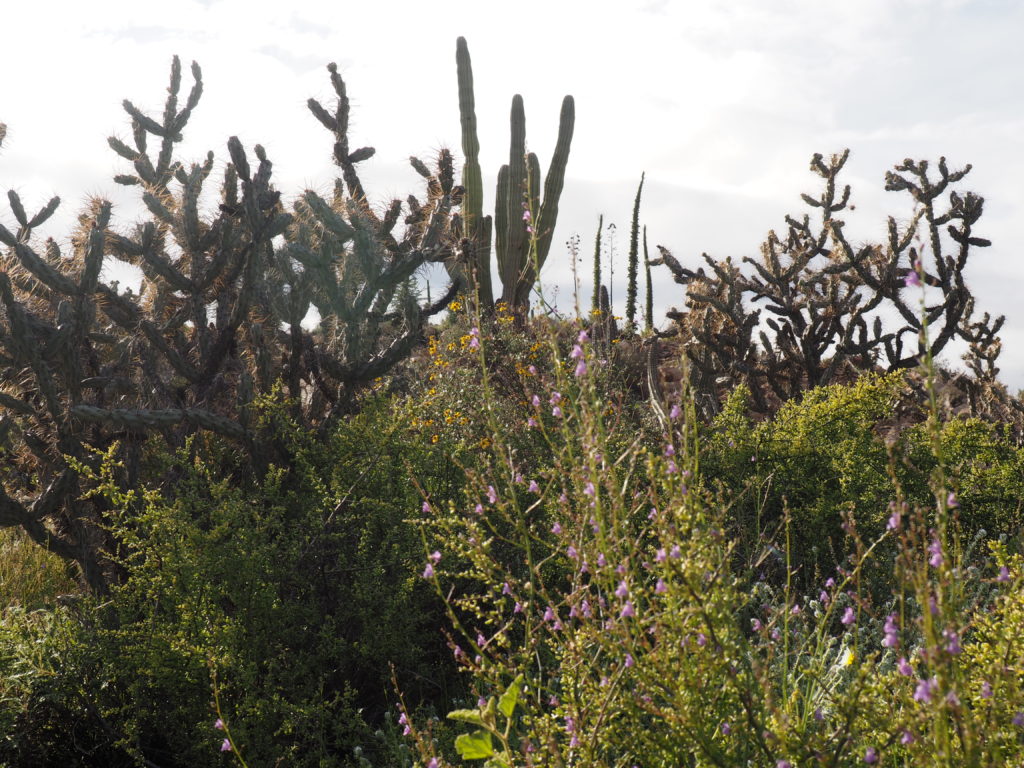
The desert in Baja is, we’re told, the most biodiverse in the world. This is not difficult to believe. The variety of plant life is startling. Each time we entered the desert we would see communities of plants of every description, many of them exotic even for desert plants. From the Elephant Tree, the Cardón, and Boojum Tree (Cirio) to the Ocotillo, there are plants found nowhere else.

The Boojum Tree (above, far right) has a double literary inheritance. An American naturalist was camping in the desert with his son who had been reading Lewis Carroll’s “The Hunting of the Snark,” a tale of people hunting a Snark (which may turn out to be a highly dangerous Boojum). The fantastical and creepily sinister look of the Cirio plant apparently caused the son to keep referring to the plants as Boojum, a name that stuck. And, of course, anyone who sees a Boojum Tree thinks of Dr. Seuss. It’s that simple. What’s not simple is tracking down any confirmation of the story we heard that Dr. Seuss, in fact, was a visitor to the peninsula and that the trees were an inspiration for some of his illustrations. If it’s not true, that would be sad, don’t you think?
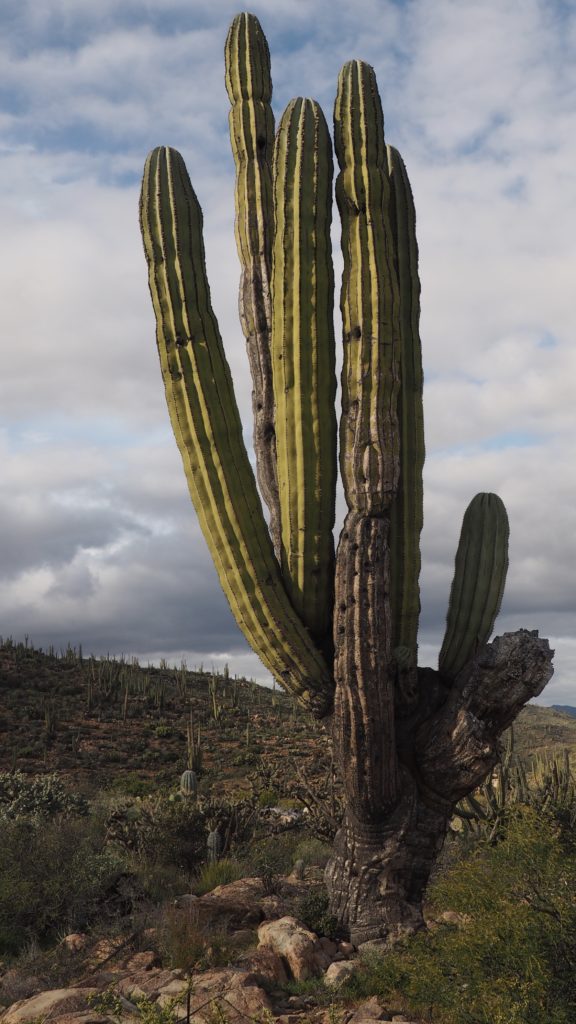
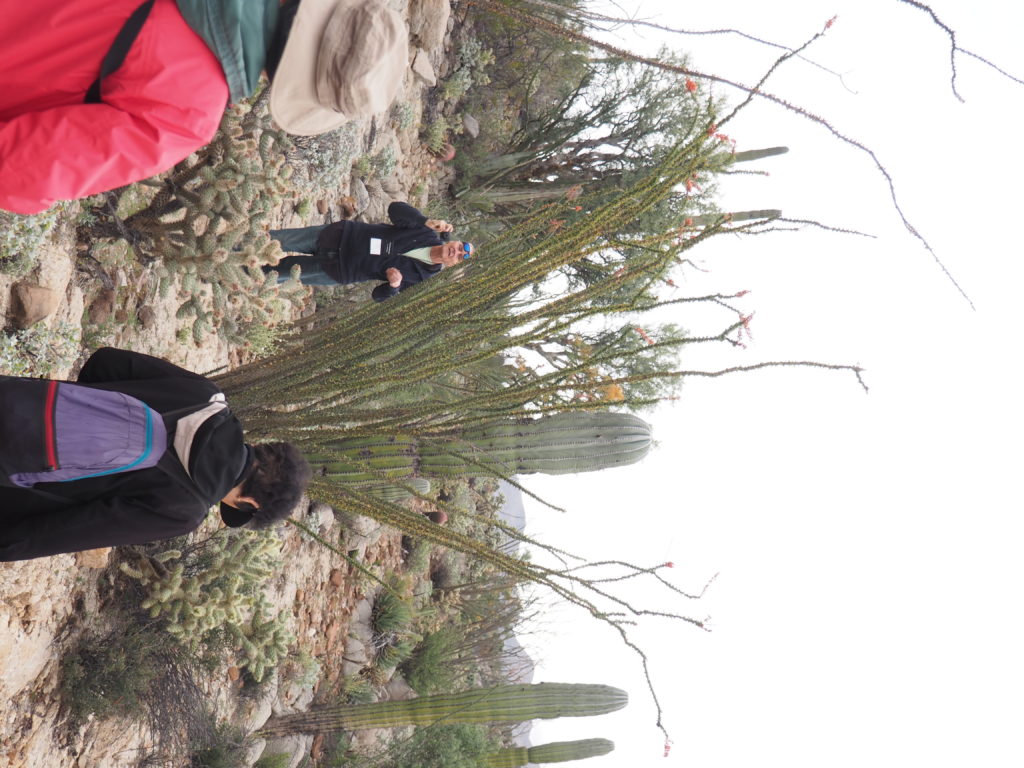
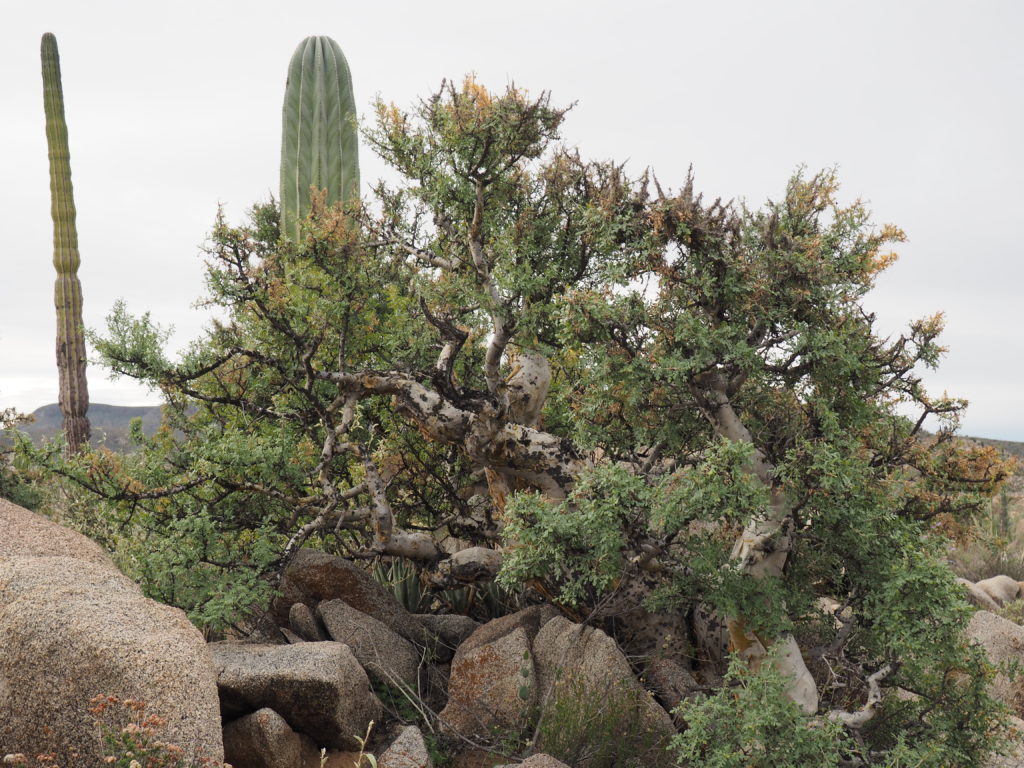
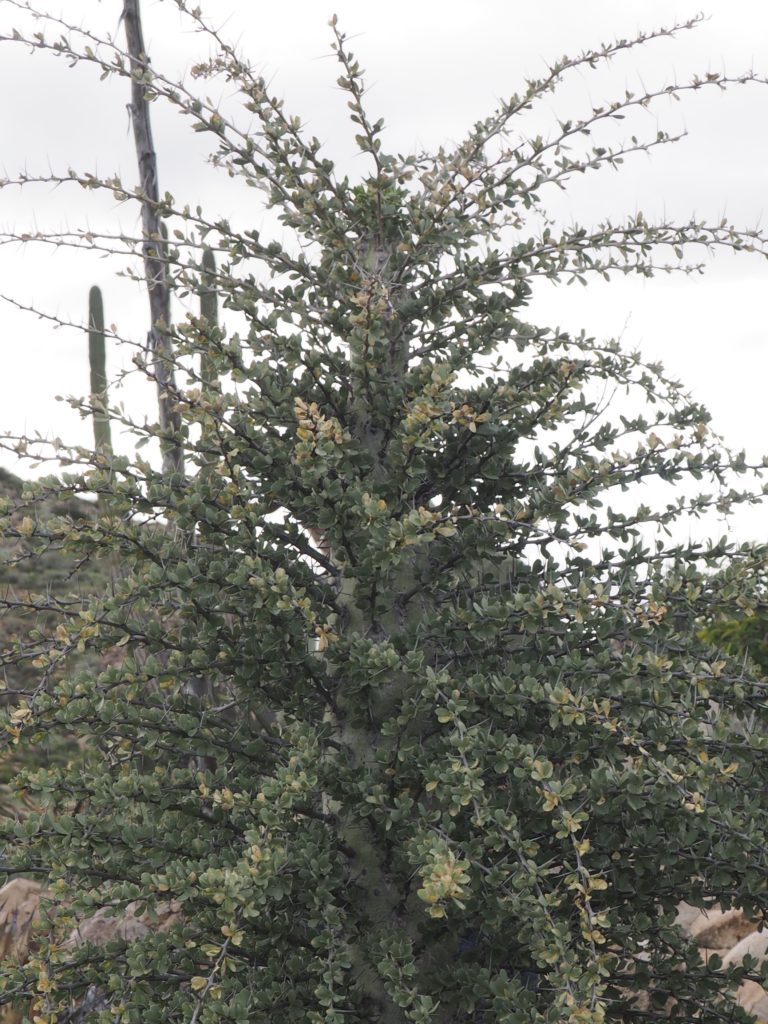
A Young Boojum 
Ocotillo Flower
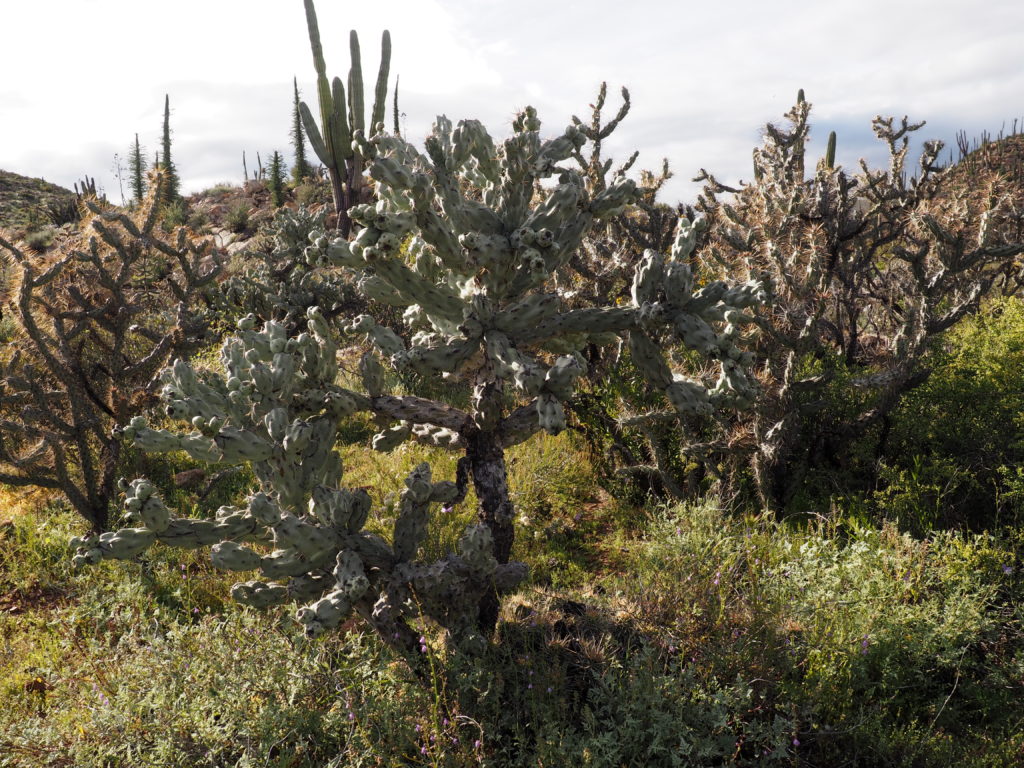
Cholla 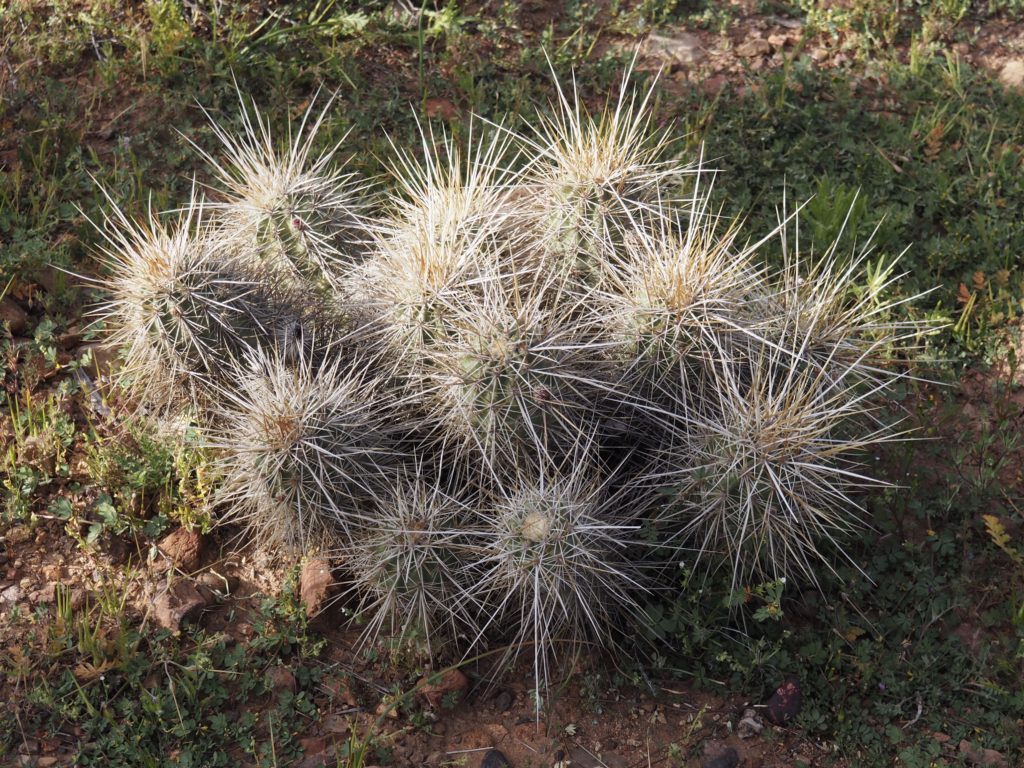
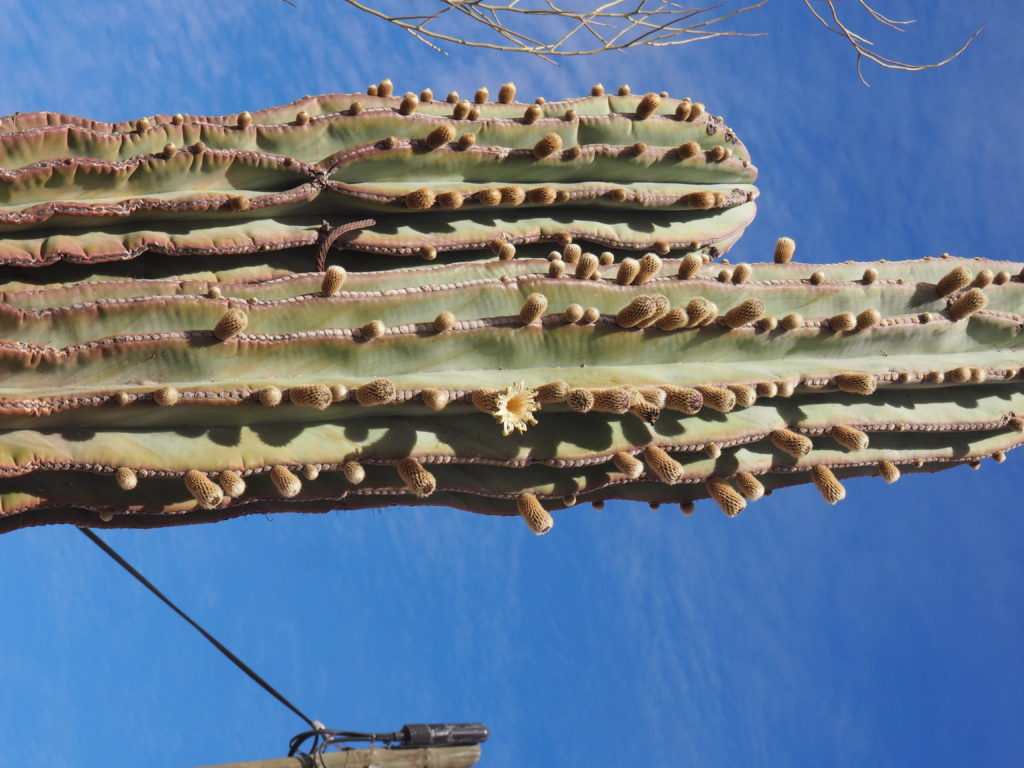
Cardón Buds & Blossoms
The Cholla is one of the more dangerous plants in the desert, as it seems to attack passersby without provocation. Not only will the slightest touch will embed a barbed thorn, but the plant seems to spread by the segments that break off very easily and start more little devils growing in a path.
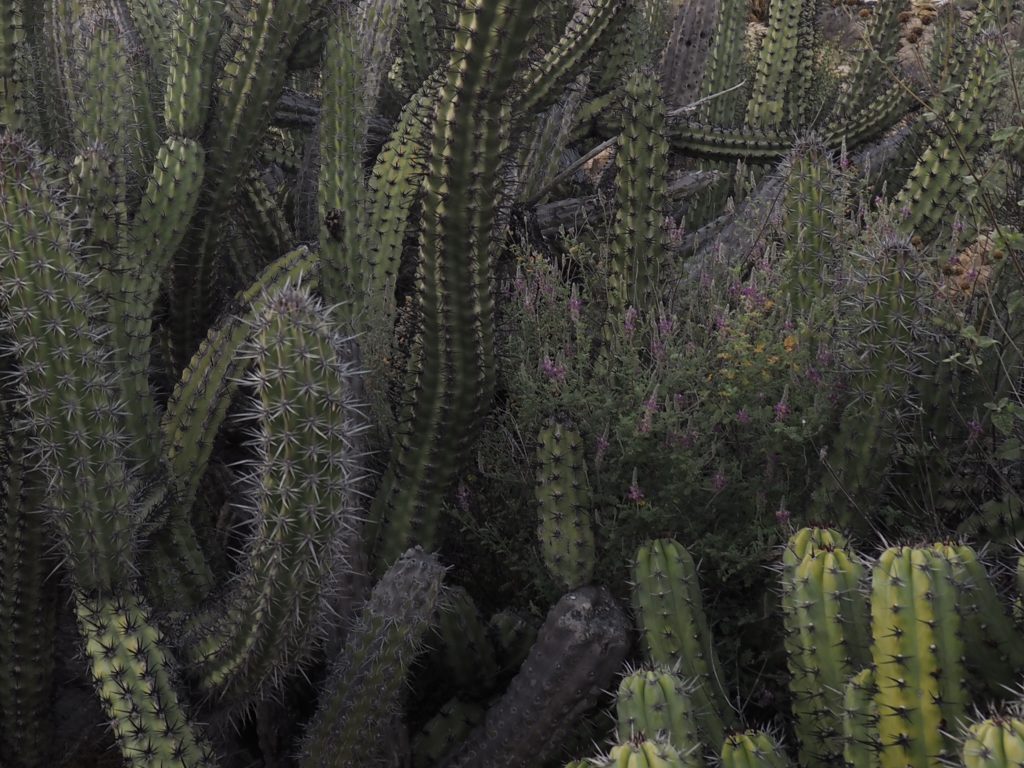
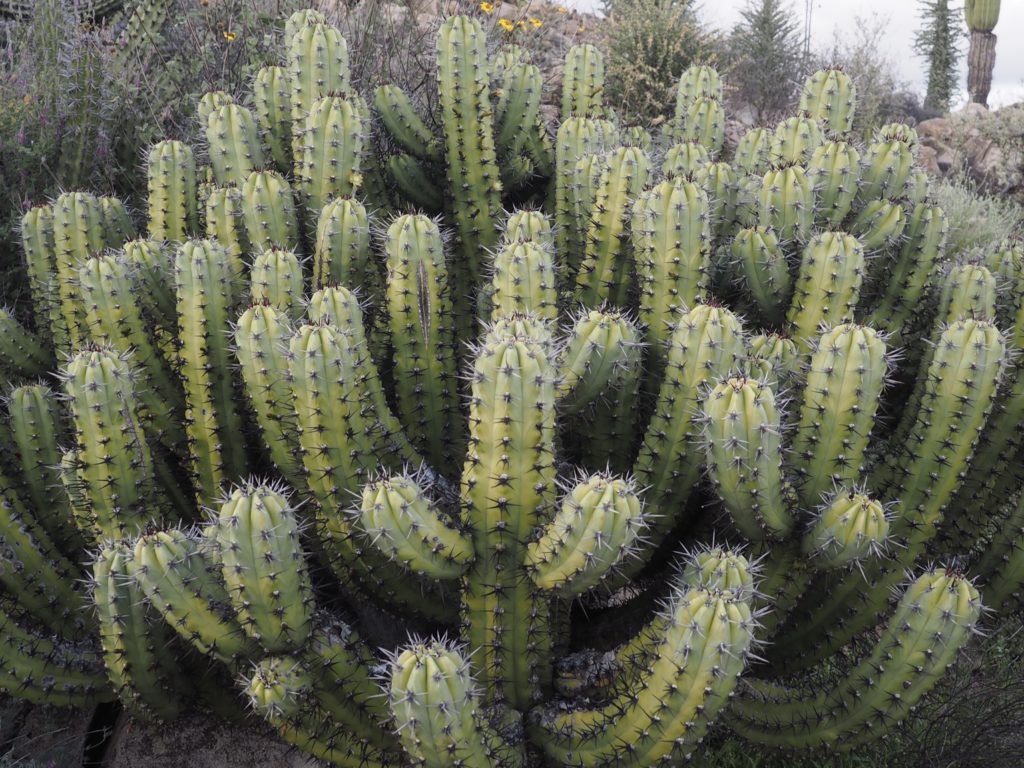
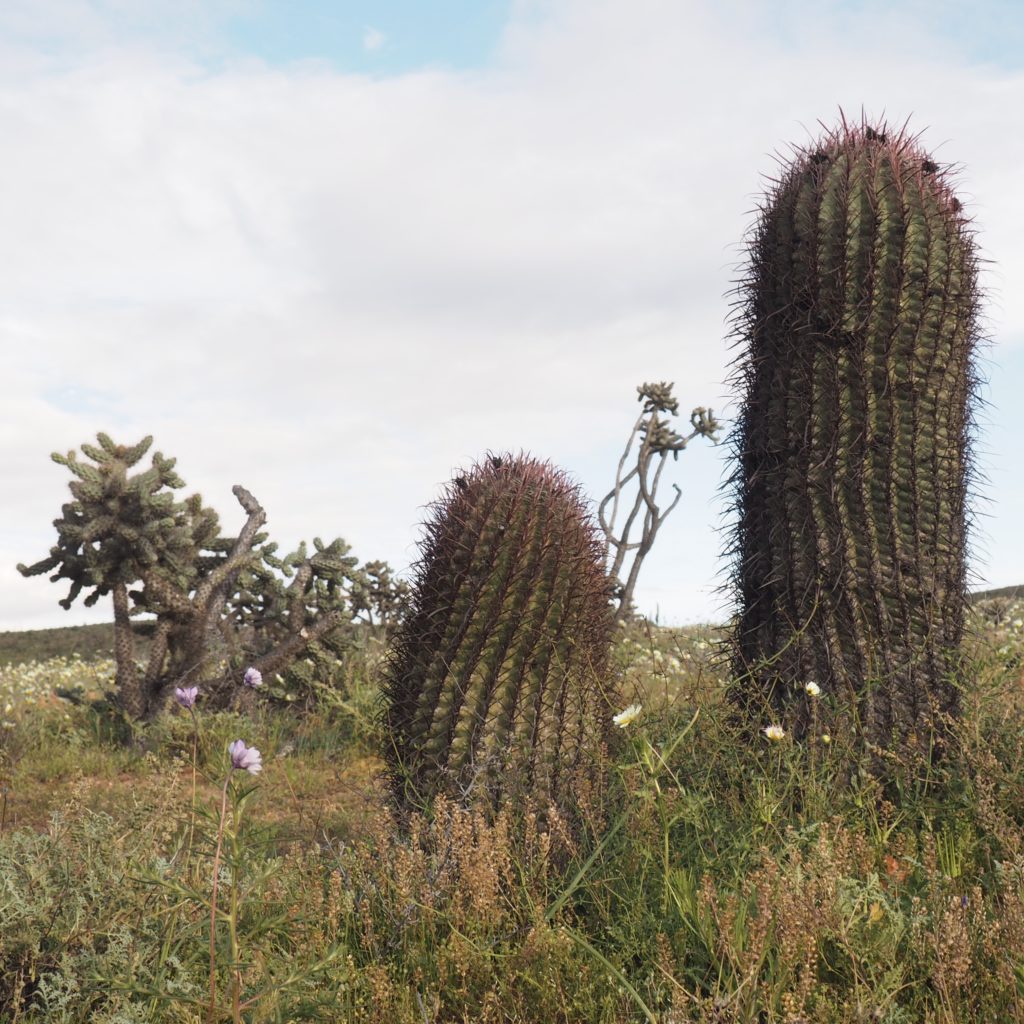
Red Barrel Cactus
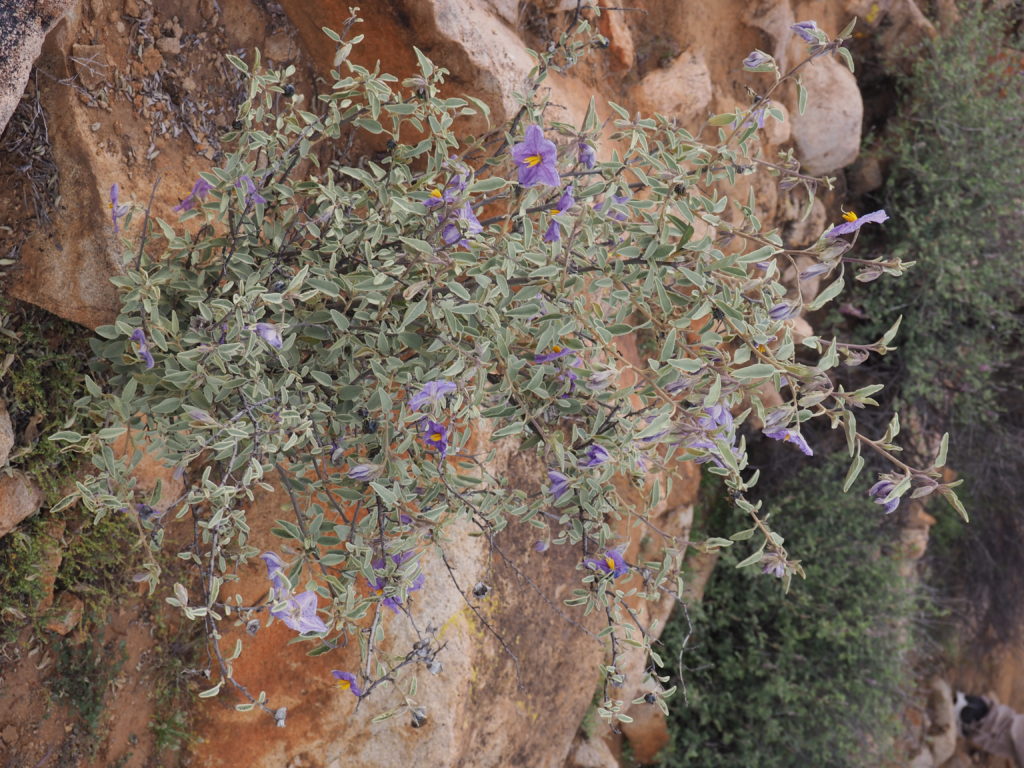
Nightshade 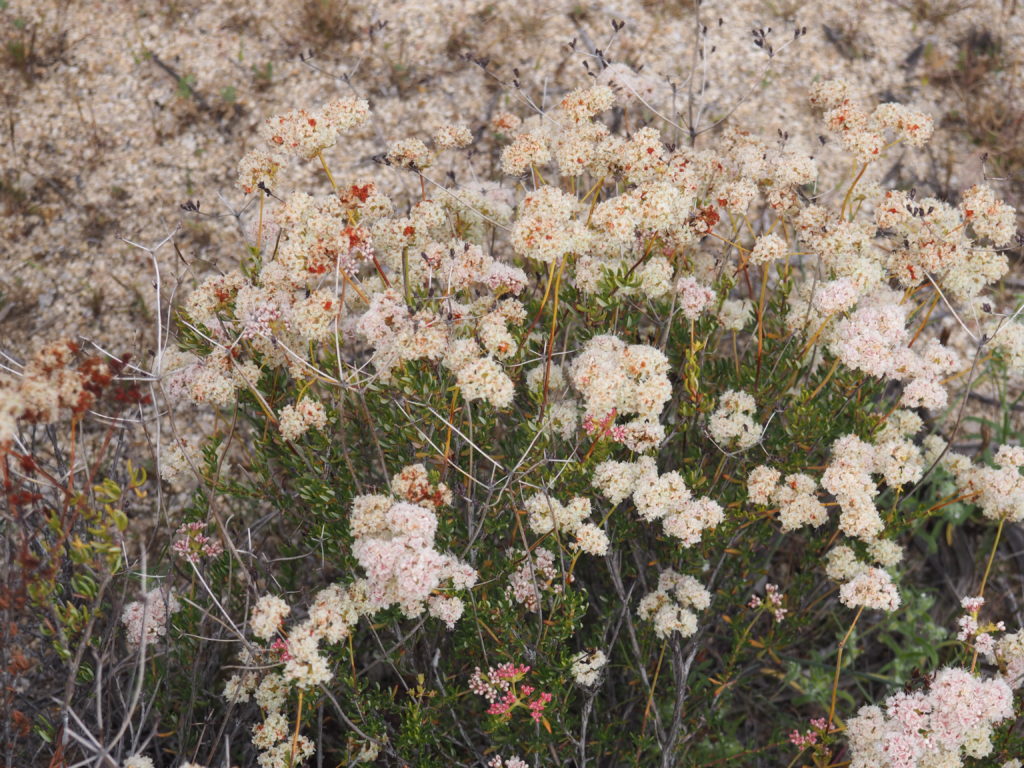
Buckwheat 
Brittlebush

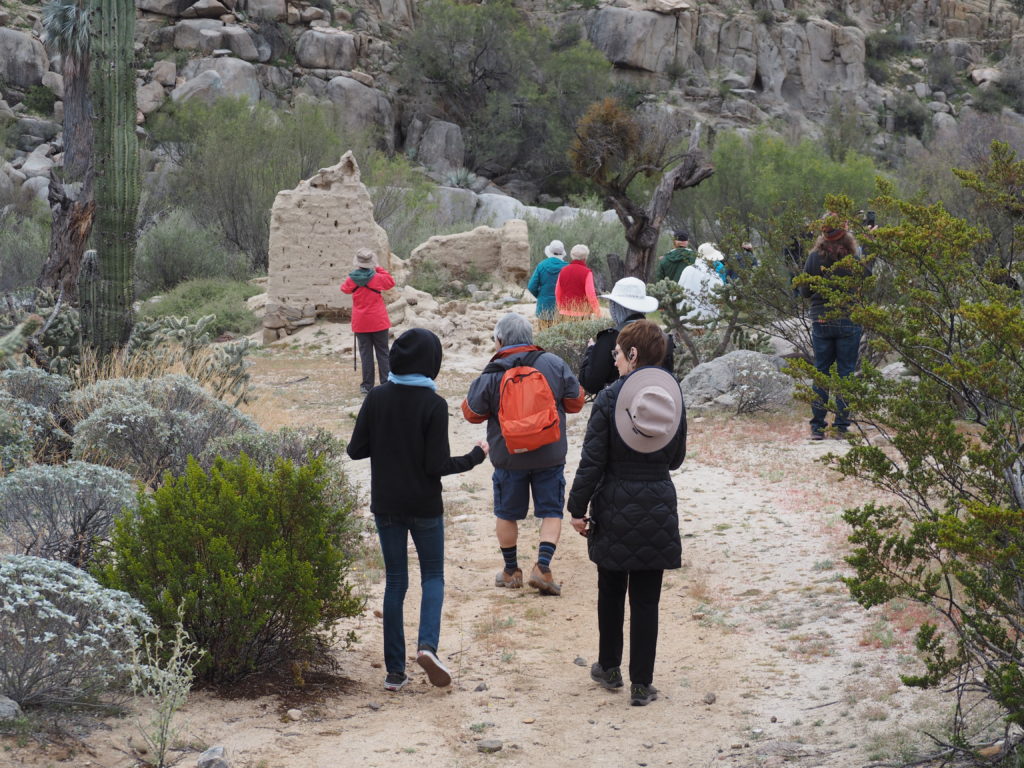
Cave Paintings

On a rainy day we climbed through the rocks up to one of the more accessible caves with Paleolithic paintings. Other caves with paintings +/- 9,000 years old can be seen, but take a day to get to through very rough terrain and a day to return, making it a three day commitment.
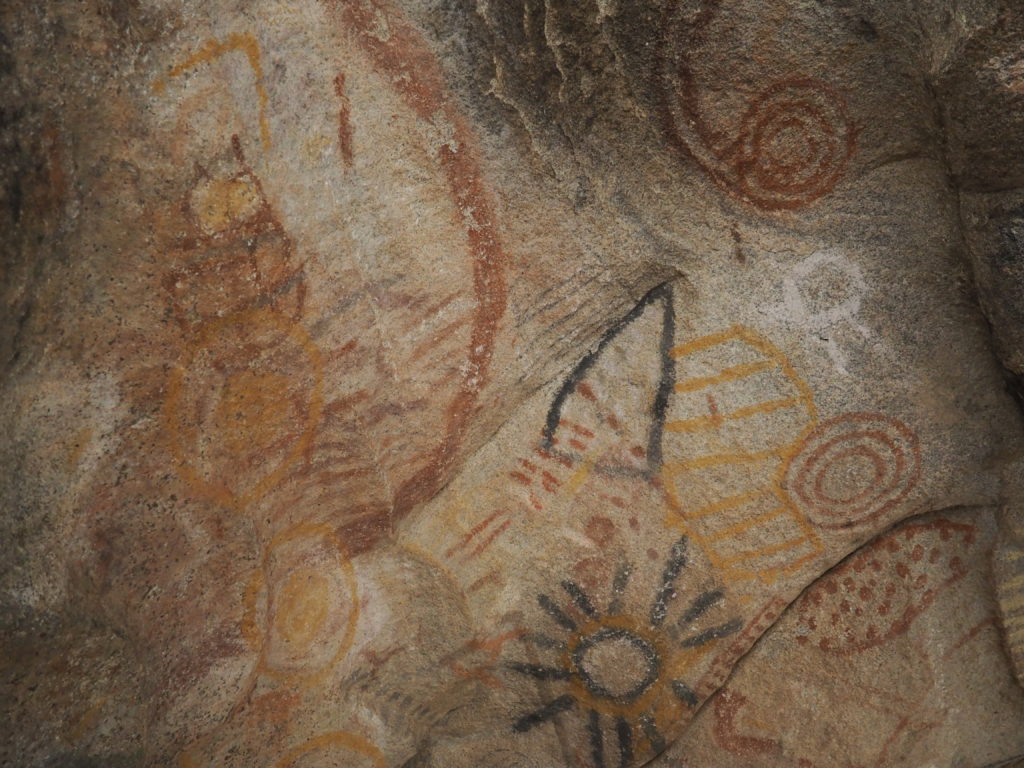
The estimated age of these paintings is 700-1,000 years. The pigments used are not local to the area of the cave. They aren’t as well rendered or nearly as large as older Baja California cave paintings, but did remind us of some of the very old cave paintings in Spain.


